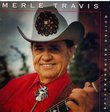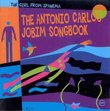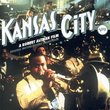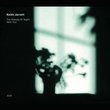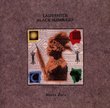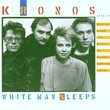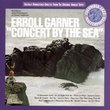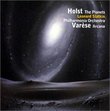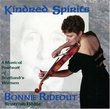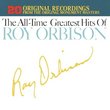| All Artists: Duke Ellington Title: The Blanton-Webster Band Members Wishing: 1 Total Copies: 1 Label: RCA Release Date: 10/25/1990 Genres: Jazz, Pop Styles: Swing Jazz, Traditional Jazz & Ragtime Number of Discs: 3 SwapaCD Credits: 3 UPCs: 078635565928, 078635565942, 743211318129 |
Search - Duke Ellington :: The Blanton-Webster Band
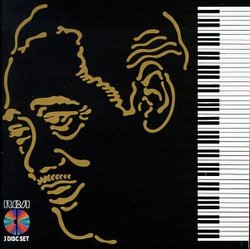 | Duke Ellington The Blanton-Webster Band Genres: Jazz, Pop
These 66 songs not only represent Ellington's artistic apex, but perhaps reflect the greatest creative period by any single artist in jazz history. Ellington had already made a lasting impression on jazz by 1940, but addin... more » ![header=[] body=[This CD is available to be requested as disc only.]](/images/attributes/disc.png?v=15401716) ![header=[] body=[This CD is available to be requested with the disc and back insert.]](/images/attributes/disc_back.png?v=15401716) ![header=[] body=[This CD is unavailable to be requested with the disc and front insert at this time.]](/images/attributes/greyed_disc_front.png?v=15401716) ![header=[] body=[This CD is unavailable to be requested with the disc, front and back inserts at this time.]](/images/attributes/greyed_disc_front_back.png?v=15401716) |
Larger Image |
CD DetailsSynopsis
Amazon.com essential recording These 66 songs not only represent Ellington's artistic apex, but perhaps reflect the greatest creative period by any single artist in jazz history. Ellington had already made a lasting impression on jazz by 1940, but adding writer/arranger Billy Strayhorn, young bassist Jimmy Blanton, and tenor great Ben Webster brought the band to extraordinary new heights. The new blood boosted a roster already touting Johnny Hodges, Cootie Williams (replaced by Ray Nance), Rex Stewart, Juan Tizol, and Barney Bigard. The set list reveals masterpiece after masterpiece: Ellington's "Cotton Tail," "Never No Lament," "All Too Soon," "In a Mellotone," "Warm Valley," "I Got It Bad," and "Sentimental Lady" plus Strayhorn's "Chelsea Bridge" and "Take the 'A' Train" offer a mere taste of the treasures within. --Marc Greilsamer Similarly Requested CDs
|
CD ReviewsAs good as anything this century, however . . . 10/29/1999 (5 out of 5 stars) "This music is as good as any music written this century. Whether you come from post-Bird jazz, rock 'n roll, alternative, or rap, Blanton-Webster is a momentous discovery. Give it some time, though. The style may be a little foreign at first, and there's a lot going on in most of the songs. . . . However, unless you've just got to have the set now or have deep pockets, wait for a new BMG remastering, or buy the French Classic versions. The quality of the RCA set is awful. Errors in A Train have not been fixed. The overall sound of the set is very muffled." The Epitome of Big Band Music Dennis | Salzburg, Austria | 08/11/2000 (5 out of 5 stars) "Among the countless issues in 83 years of recorded jazz there are thousands of highly recommendable albums, a few hundred of must-haves and a rucksack full of desert island discs. But if we had to load a time capsule in order to show future generations what the 20th century has achieved in musical terms, the instant choice would be - besides four or five other recordings - this set. I regrettably admit that I don't manage to listen to all my records, but through the years I listened to these titles over and over. Never before and after did an orchestra produce such thrilling music. The Duke and his men were riding on an, even to Ellingtonian measures, incredible wave of forward-romping, unprecedented energy. Some of Duke's best-loved compositions were made during these years (1940-42) and they cover the whole range of the Ellingtonian style, from his inimitable renditions of the blues, pieces of exotica and simple hits-of-the-day to tonal portraits, concertos, roaring instrumentals and mood pieces with all shades of colour. Billy Strayhorn had already joined the band in 1938 and blended his way of composing/arranging perfectly with Duke's. Jimmy Blanton came in 1939 and changed bass-playing forever. ...and at the beginning of 1940 Ben Webster added his wonderful tenor sax to the sound palette. All the old instrumentalists were still in the band and at the pinnacle of their technical and artistic power (Hodges, Cootie, Rex, Carney, Tizol, Brown, Nanton, Sonny, Barney,...). Instead of praising on and on I'll give you two selections of these great masterpieces: "I Don't Know What Kind of Blues I Got" - Duke's musical heritage was not rooted in the blues tradition, like those of Count Basie and Charlie Parker. As a youngster he admired the masters of stride and ragtime, the world of blues remained strange to him all his life. Nevertheless he left us a bunch of immortable blues compositions, harmonically undoubtedly blues, but arranged and performed in a way that no other jazz or blues musician did till the present day. The title is a lesser-known composition, yet it contains some of the essentials of the "Ellington-Effect". he dissonant piano chords in the introduction show us two elements of his genius: 1.He did everything his way. 2.Once we have heard his solutions, we are convinced that this is the only way it should be done. After the piano, Barney Bigard plays his clarinet in the deep reister, then Lawrence Brown's trombone softly joins from behind and they both create the famous "Mood-Indigo"-effect, a cloud dwelling on a gentle breeze. Then we moeet the three muted trumpets with an obligato by Ben Webster, soon supported by the unparalleled reed section, and Barney takes a flight over the crescending orchestra, now in his high register. Lawrece improvises over the original melody. Two thirds of playing time are already over and no other leader would place a vocal part so late. But Dike is different, and Herb Jeffries delivers the unusual lyrics convincingly. Then the trumpets and the saxes seem to stray from each other, polaying in different keys - which they actually don't - portraying the doubtful mood evident in the words. As the record comes to a close, we have learned of the beauty in the "World of Ellingtonia". "In a Mellotone" - For years, this has been the representative Ellington recording to me. The music as well as the title perfectly demonstrate what Duke's music was all about. The band always played in a mellow tone, never too loud, even when the volume was turned up high. Duke used the chord structure of the old tune "Rose Room" (which he recorded in 1932). But he did not only write a new melody on the old harmonies (as it was usual in the bebop era), it's the call-and-response theme between the three trombones and the five saxes that really carries the song and makes it so unique. The two sections play together as one, individually. The whole arrangement does not contain any ground-breaking device, no chords or harmonies presaging the modern jazz to come (like Duke had done so many times before). It's just a plain old swing tune executed in a simply perfect manner. The musical material is excellent and the band really shows why this is probably Duke's best orchestra and certainly the best jazz orchestra ever. The sound of the sections,the brilliant soloists, the rhythmic drive of Jimmy Blanton's bass, the importance of the underrated Sonny Greer and Freddie Guy and, last but not least, Duke himself - the piano player, who directs his sound machine from his keyboard with Dukish chords and a strong, percussive beat. There's only one flaw in this box. Its sound is inferior to the mammoth-box of RCA (24 CDs), but nevertheless I recommend it to every one. Just buy it! The sooner, the better." Awesome Music, Aweful Sound Thomas R. Gillett | Wilton, CT USA | 12/01/2000 (1 out of 5 stars) "The sonic restoration job was botched -- pure and simple. Many of the recordings sound suspiciously like fake stereo -- some as if the music is coming from the bottom of a tin garbage can. Fortunately, the same material (and more) is available on a new disc from Definitive Records of Spain, with much better sound. (Duke Ellington: Complete Columbia & RCA Victor Sessions with Ben Webster featuring Jimmy Blanton, DRCD11170."
|

 Track Listings (22) - Disc #1
Track Listings (22) - Disc #1